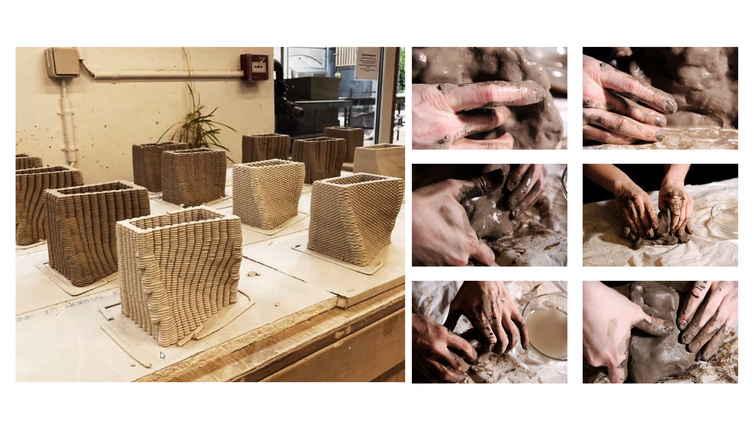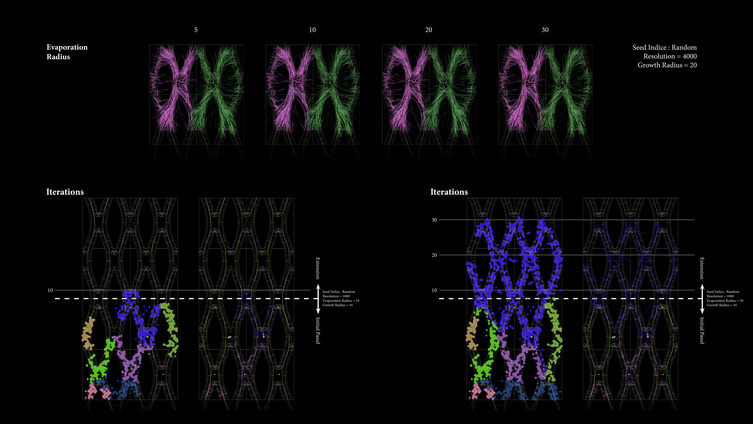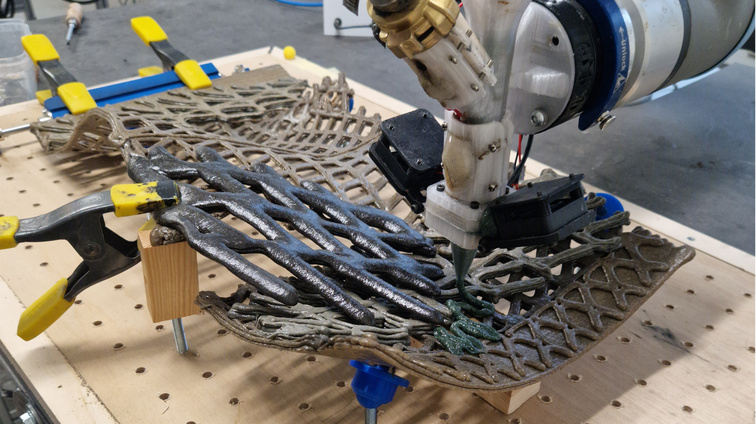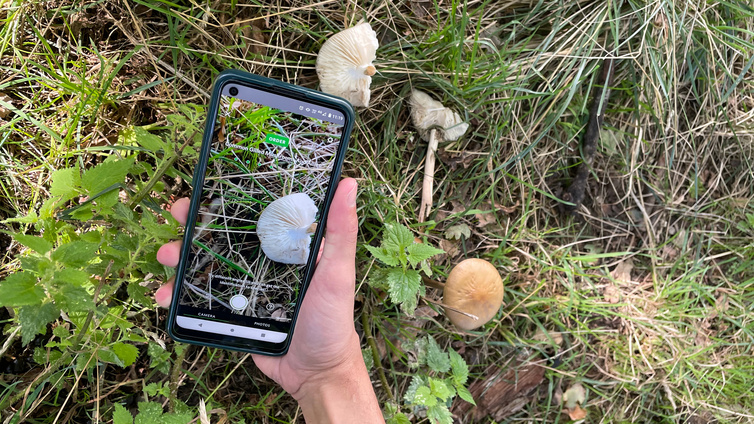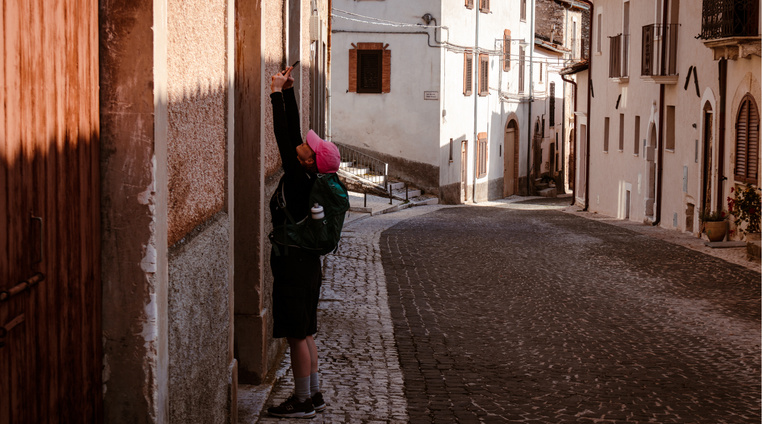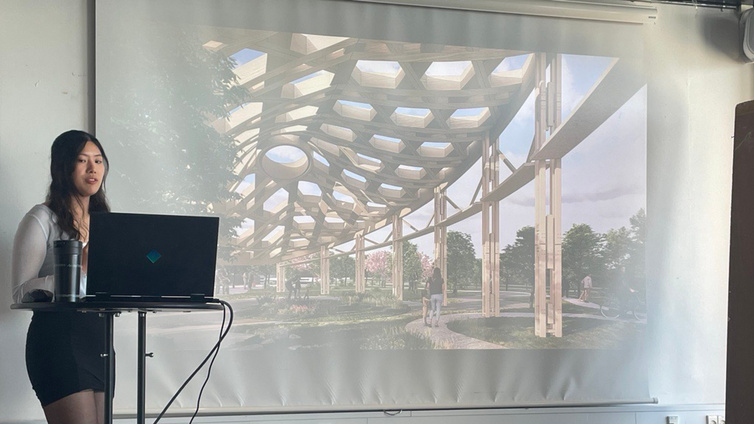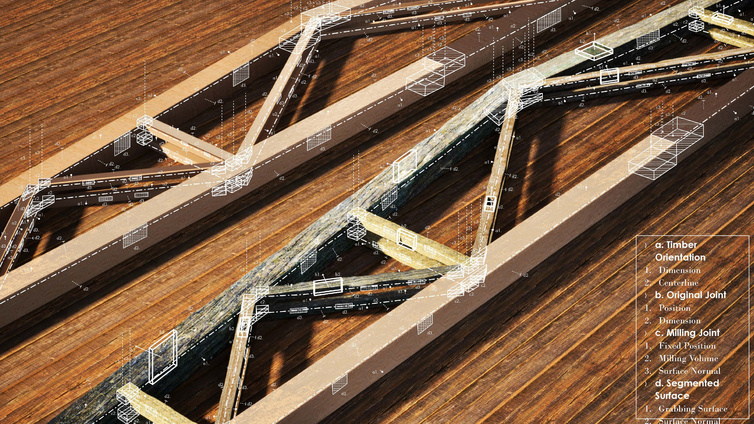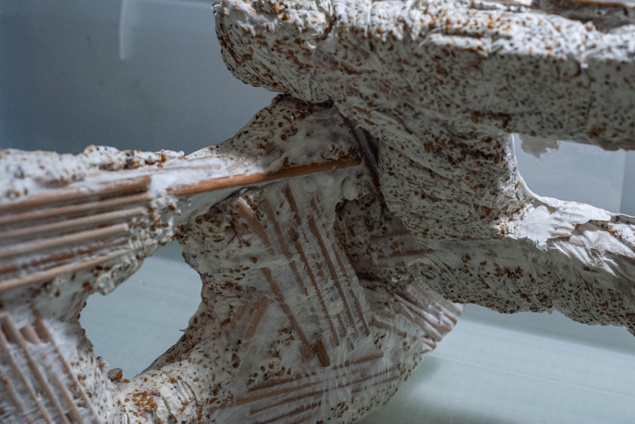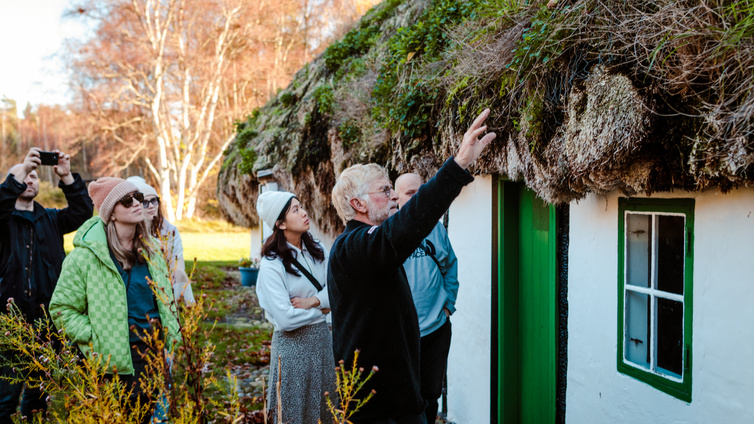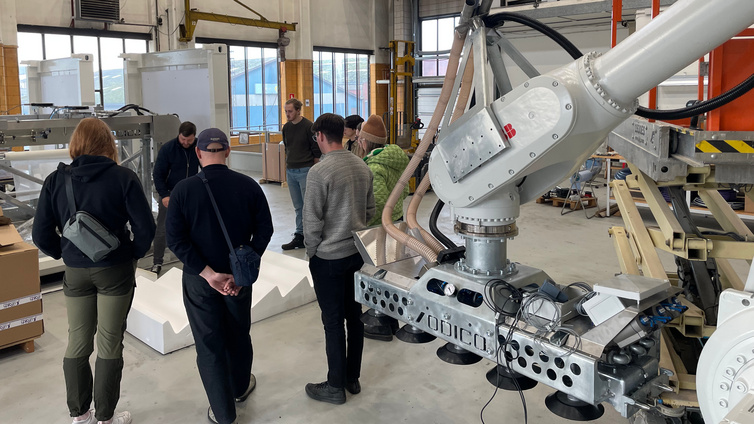The programme is structured around project-based experimentation and direct design engagement. These activities are supported by coursework that introduces core skills and multiple modes of applied and reflective enquiry. Courses in modelling and simulation introduce students to Grasshopper, Python and Life Cycle Assessment. Critical thinking is continuously developed through structured reading and discussion. Workshops and courses in digital fabrication introduce students to robotic fabrication, bio-design and materialisation practices.
We place particular emphasis on computation as an enabler of new ways of working with:
The shift away from an extractive and predatory use of resources, and towards their regenerative and sustainable use, requires new ways to understand the interdependency of materials and buildings: this includes the use of heterogenous biogenic materials, the optimisation of performance to minimize material use, the impacts of consumption and the creation of localised and circular built environments.
Students consider resources across the scales of landscape, building, element and material through attention to ecologies and timescales, modelling life cycles, and investigating strategies for recycling, repurposing and upcycling. They leverage the potential of computational techniques to develop processes of material grading, sorting and placing material stocks.
They explore the creation of open-source frameworks that gather and curate geospatial and ecological data to drive early-stage design decisions, guiding architects into preserving the biodiversity in the ecosystems they intervene in. By focusing on such issues, design perspectives develop carefully crafted relations that connect buildings and inhabitants to the ecosystems that host them as well as the specific resources they provide.
The emerging paradigm of Biodesign recasts our relationship to materials, challenging assumptions of how materials are made, how they perform and their role in our buildings, and our expectations of care, maintenance and lifespan.
Materials such as mycelia-, organic cellulose- and algae-based materials allow us to reconsider how we can grow structurally performing materials and harvest them for the built environment. The growth, architecture and steering of these materials, performed and monitored at the bio-lab, is a crucial step to consider. Sensing, modelling and fabricating then become interfaces for an exploration of the living, and opportunities to question the nature of a living architecture and how can it co-exist in sympoetic relationships with human inhabitation.
Students conduct material studies to devise new bio-composites and assess performances, tailoring them for digital fabrication processes including additive manufacturing, spraying or casting. Physical prototyping allows them to evaluate both material aspects and architectural potential. These investigations stretch beyond the use of biomaterials in building construction, to explore their use as tools for bioremediation and bioreceptivity.
Advanced fabrication techniques connect design to making, offering new ways of working with traditional materials as well as opening up the use of novel materials and materialisation processes.
Based on a direct dataflow between design software and manufacturing technology, robotic construction and additive/subtractive manufacturing democratise and decentralise the making process, give access to new ranges of formal complexity, and enable the bespoke fabrication of non-standard components.
Students leverage the precision of additive manufacturing to enhance technical performances, from structural capacities to natural ventilation and temperature regulation. They explore how robotic techniques of assembly can optimize the sequencing of components, and enable novel design for assembly/disassembly logics. More radically, they investigate how machines can learn and incorporate human collaboration.


